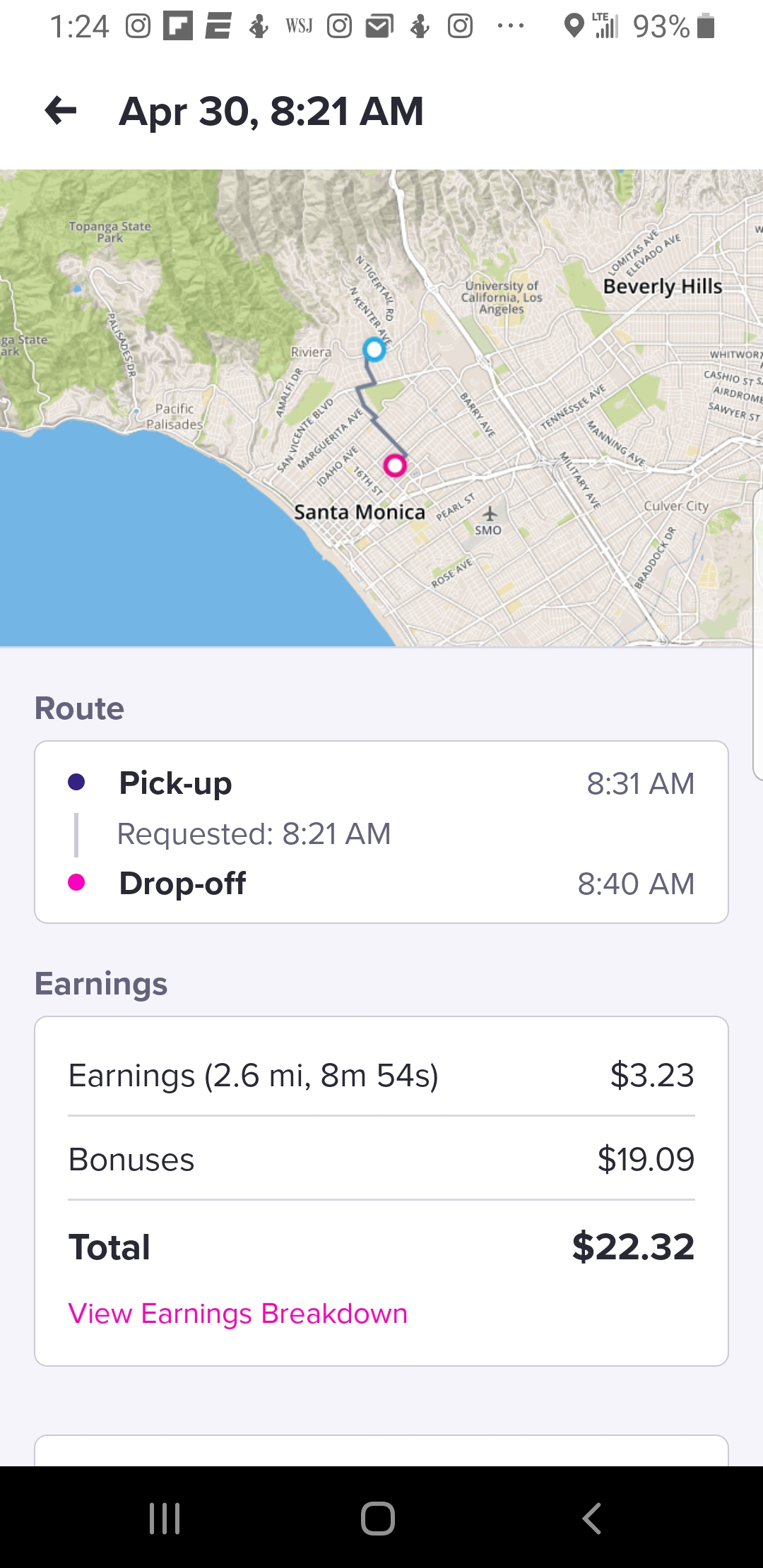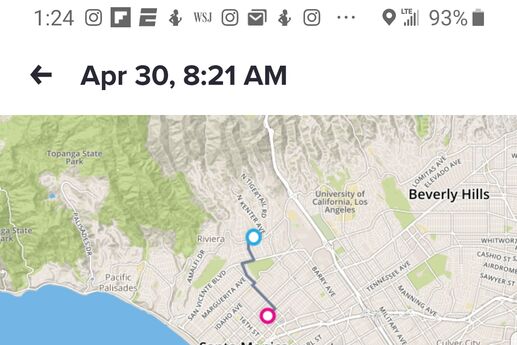How I made $22 in 9 minutes Driving for Lyft
On a pretty uneventful morning the other day in Los Angels, something quite unusual happened: for a brief moment it was worthwhile driving for Lyft. I know, pretty much everyone reading this post has either taken a shared ride, driven a shared ride, thought about driving for a rideshare company, or have read about it. And, if you have ever wondered if it is worth driving, take my word for it, it isn't. You can't make much more than $15.00 an hour (and that is on a good day), and overall hourly yield, net of gas, insurance and maintenance expenses will be closer to $9.00 or $10.00 per hour. Maybe less. Over the years as they prepared for their respective IPOs last month, both Lyft and Uber have tinkered with their app, bonus payouts, incentives and other promotional messaging for drivers to get to profitability. They both have bled red ink since the beginning to fund growth, and in their first few days of trading investors have send a clear message buy selling the stock down off their initial public trading prices. So, this means that Lyft and Uber are both going to have to figure a way to avoid legal challenges from states over the status of their drivers (and what benefits they are owed), satisfy demand, maintain supply (drivers), and make each ride profitable. As Amazon does with the constant testing of prices of their basic goods available online, the ride share providers are constantly testing pricing tolerance thresholds for riders. Most agree that fares will increase overall, and rate surges at peak travel times will spike. Indeed, the young people that I drive around in Santa Monica take Uber and Lyft because it is cheaper and less expensive than owning, insuring, parking and maintaining a car. And as long as a combination of ride share, scooters, Waive Cars and public transit come in under say, $600 a month, it is the better deal. Plus you'll have to deal with a valet, a favorite Los Angeles institution.

And so, at about 7:30 in Brentwood a flipped on my Lyft app and saw the bonus fare window box open up. It is a new feature since Lyft went public in late April, and involves a pink square or rectangle, surrounded by a purple outer border with a lower bonus. Stay in the pink area and get a bonus, stay with the purple area and get a slightly lower bonus. I was in the pink area and the bonus was $19.09 (it is usually around $1.75). So, I pulled over, stared at my phone just to make sure I was seeing it correctly, and was pinged for a pick-up. I accepted, drove about 5 minutes to pick-up a very nice woman, and drove her to her office in Santa Monica. It was a 2.6 mile ride that took 8 minutes and 54 seconds, which usually earns the driver $3.23. But on this day, at this time, with a $19.09 bonus, I earned $22.32, which correlates to about $120/hour. Since drivers keep about 80% of the fare and the platform keeps 20%, that means the nice lady paid roughly $28.00 for her 9 minute ride. Obviously she needed to get to work so she paid the extra fee, but at what point will riders choose alternate ways of getting around?
In short, it is my opinion that in the the not too distant future, both Lyft and Uber will be forced to pay drivers a basic minimum hourly wage (in California that is $11.00 on it's way to $15.00 by 2022) and provide for some gas and maintenance. In exchange they'll ask their drivers to keep a predictable schedule so they can manage supply.





